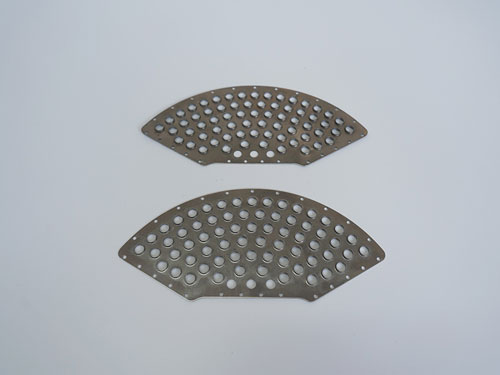
 Home > News
> News Information
Home > News
> News Information
Hardware stretching partsSelection and planning methods
(1) The production and manufacturing of metal stretching parts should preferably use standard mold frames, as the type and specifications of the standard mold frames determine the type and specifications of the upper and lower mold frames. If you need to plan your own mold frame, the diameter of the circular mold frame should be 30-70mm larger than that of the concave mold frame, and the length of the rectangular mold frame should be 40-70mm larger than that of the concave mold frame. Its width can be slightly greater than or equal to that of the concave mold frame. The thickness of the mold base can be determined by referring to the standard mold base, generally 1.0-1.5 times the thickness of the concave template, to ensure satisfactory strength and stiffness. For large non-standard mold frames, it is necessary to plan according to actual needs, casting technology requirements, and casting layout planning specifications.
(2) The mold frame selected or planned for hardware stretching parts must be compatible with the relevant dimensions of the worktable and slider of the selected press, and necessary inspections must be conducted. For example, the general small scale of the lower mold seat should be at least 40-50 millimeters larger on each side than the size of the leakage hole on the press worktable.
(3) The mold frame materials are usually HT200 and HT250, and Q235 and Q255 sample steel can also be used. The mold frame for large precision molds is made of cast steel ZG35 and ZG45.
(4) The parallelism of the upper and lower surfaces of the mold frame should meet the requirements, and the parallelism is generally level 4.
(5) The distance between the guide sleeve of the upper and lower mold seats and the guide column device hole needs to be shared, and the accuracy is usually required to be below ± 0.02mm; The axis of the guide column and guide sleeve mounting hole of the mold base should be in line with the upper and lower planes of the mold base. When installing sliding guide columns and guide sleeves, the straightness is generally level 4.
(6) The upper and lower surface roughness of the mold base is Ra1.6~0.8 μ m, which can be reduced to Ra3.2~1.6 μ m while ensuring parallelism.

Pad: Pad is used to directly receive and disperse the pressure transmitted by the convex mold, in order to reduce the unit pressure on the mold seat and avoid partial compression of the mold seat. The outer dimensions of the pad are the same as those of the concave mold, and its fixing method is also fixed with screws and pins.


.jpg)






